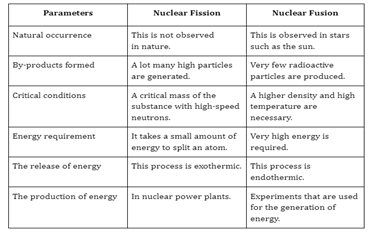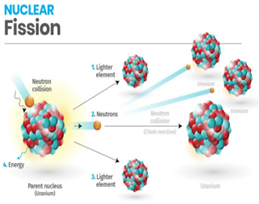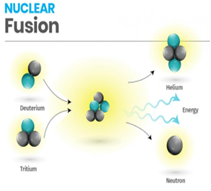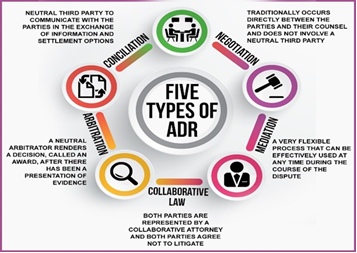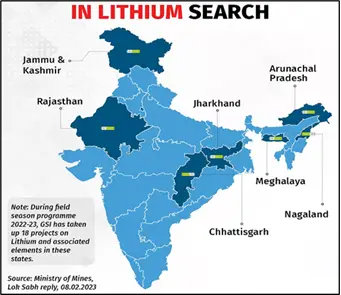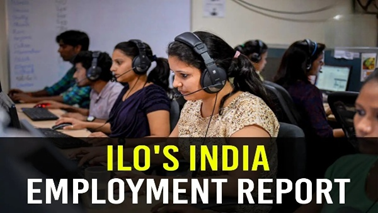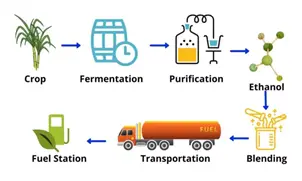Saturday, 3rd August 2024
India Drowning Disaster
Why in the news?
- Drowning is a significant public health issue, having resulted in over 2.5 million deaths over the past decade, predominantly affecting low- and middle-income countries.
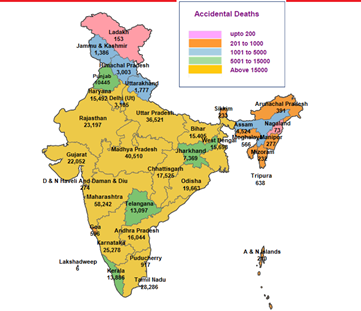
Factors Contributing to Incidents of Drowning in India:
- Access to Water Bodies:
- Many residents in India live near rivers, ponds, and wells, where safety measures and supervision are often inadequate, particularly for children.
- In 2022, accidental falls into water bodies resulted in 28,257 deaths.
- Additionally, 'Other Cases' accounted for 9,962 deaths, including various unclassified drowning incidents and 284 deaths from boat capsizes.
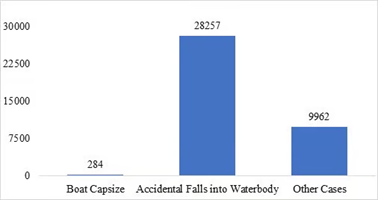
- Flooding: The monsoon rains cause flooding, which is worsened by poor drainage systems. This exacerbates the risk of drowning for communities affected by these events.
- Cultural Perceptions: In certain communities, drowning is perceived as an inevitable occurrence, which hampers the implementation of safety measures and awareness campaigns.
- Economic Constraints: Poverty restricts access to essential safety equipment, swimming lessons, and emergency services, particularly affecting low-income families residing in high-risk areas.
- Inadequate Safety Regulations: The lack of stringent safety regulations for public water bodies contributes to higher drowning rates. The enforcement of safety measures, such as lifeguards at beaches and swimming pools, is often insufficient.
Statistics Related to Drowning Deaths:
- Global Data:
- Global Mortality: According to the WHO Report on Drowning 2014, drowning claims 372,000 lives annually worldwide, marking it as a significant yet neglected public health threat.
- Regional Disparities:
- Over 90% of unintentional drowning deaths occur in low- and middle-income countries. This figure is nearly two-thirds of the deaths from malnutrition and over half of those from malaria.
- The WHO Western Pacific and South-East Asia regions account for more than half of global drowning incidents, with drowning death rates in these regions being 27–32 times higher than in the UK or Germany.
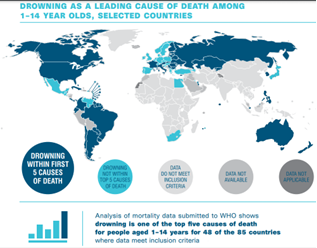
- Scenario for India:
- Data: Approximately 38,000 Indians die from drowning each year.
- Drowning as a Significant Concern: The National Crime Records Bureau (NCRB) report for 2022 highlights drowning as a major public safety issue, accounting for 9.1% of all accidental deaths in India, with 38,503 fatalities.
- State-wise Data: Madhya Pradesh reported the highest number of drowning deaths at 5,427, followed by Maharashtra (4,728) and Uttar Pradesh (3,007), indicating a widespread issue across various states.
- Age and Gender-wise Distribution: Children aged 1-14 are particularly at risk, with drowning being a leading cause of death in this age group.
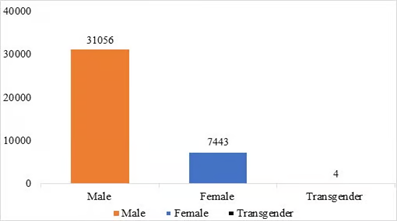
Role of WHO in Addressing Drowning Incidents:
- The World Health Organization (WHO) recognizes drowning as a leading cause of injury-related death and disability globally.
- The WHO’s first Global Report on Drowning Prevention in 2014 brought international attention to the issue.
- WHO Resolution WHA76.18 emphasises the need for coordinated, multi-sectoral action to address drowning effectively.

Recommendations for the Prevention of Drowning Accidents
- Installation of Barriers: Physical barriers around water bodies, such as pools, wells, and ponds, can significantly limit access, especially for young children. Fencing and secure covers act as primary preventive measures.
- Safe Areas Away from Water: Designated safe zones for children and adults away from water bodies should be created. These areas should include engaging activities to distract attention from water.
- Training in Rescue Techniques: Educating bystanders in safe rescue and resuscitation techniques, such as Cardiopulmonary Resuscitation (CPR) and mouth-to-mouth breathing, can save lives. Community programs should focus on training individuals to respond effectively in emergencies.
- Integration into Education Curriculums: Water safety education should be incorporated into school curriculums to ensure children learn preventive measures from an early age.
- Enforcement of Boating Regulations: Strict regulations for boating and shipping, including mandatory life jacket use, regular vessel maintenance, and adherence to safety protocols, should be enforced to prevent accidents on water.
- Flood Risk Management: Developing flood-resistant infrastructure and early warning systems can reduce drowning incidents during flood events. Investment in such systems by local authorities is essential for enhancing community resilience.
Conclusion
Drowning is a preventable tragedy requiring urgent attention in India. Collaborative efforts among government bodies, NGOs, and local communities are crucial in creating a safer environment for all, particularly for vulnerable populations such as children. A comprehensive approach is essential to ensure that no life is lost to drowning.
|
UPSC Civil Services Examination Previous Year Question (PYQ) Mains: Q:1 Discuss the recent measures initiated in disaster management by the Government of India departing from the earlier reactive approach. (2020) Q:2 Vulnerability is an essential element for defining disaster impacts and its threat to people. How and in what ways can vulnerability to disasters be characterised? Discuss different types of vulnerability with reference to disasters. (2019) Q:3 Describe various measures taken in India for Disaster Risk Reduction (DRR) before and after signing ‘Sendai Framework for DRR (2015-30)’. How is this framework different from ‘Hyogo Framework for Action, 2005’? (2018) |
Source: DTE
The ethics of hunger strikes as a mode of protest
Why in the News?
- Hunger strikes have recently gained attention due to their complex ethical implications, such as whether it is appropriate to provide medical treatment against the will of someone on strike or if force-feeding could be harmful.

What Are Hunger Strikes?
- About:
- Definition: Hunger strikes involve the voluntary abstention from food, and sometimes water, as a form of protest.
- Purpose: They aim to inspire change, dissuade, or apply pressure by highlighting perceived injustices or demanding reform.
- Usage: Often considered a last resort when other forms of protest have been ineffective or unavailable.
Historical Context of Hunger Strikes:
- Ancient Practices:
- Pre-Christian Ireland: The practice of troscad (fast) was used to protest unpayable debts, intending to shame the creditor.
- Ancient Kashmir: Kalhana’s Rajatarangini records instances of hunger strikes against undesirable royal decrees or taxes.
- Modern Development:
- Russian Political Prisoners (1870s): Utilised hunger strikes to protest prison conditions.
- Irish Republicans (1917-1920): Figures such as Thomas Ashe and Terence MacSwiney died during hunger strikes, drawing attention to the Irish independence movement.
- Indian Freedom Fighters:
- Mahatma Gandhi: Described fasting as a crucial tool in the armoury of Satyagraha, employing it over 20 times during the Independence movement.
- Jatin Das (1929): Died after a 63-day hunger strike, highlighting the inhumane treatment of political prisoners.
- Bhagat Singh and Batukeshwar Dutt: Their hunger strikes against poor prison conditions garnered significant support and media coverage.
|
Modern Context of Hunger Strikes in Independent India:
Recent Examples:
|
What Are the Arguments in Favour of Hunger Strikes?
- Personal Autonomy and Freedom of Choice:
- Autonomy: Hunger strikes represent an individual’s right to make personal decisions and protest in a manner of their choosing.
- Freedom of Expression: They serve as a form of peaceful protest and free speech, aligning with democratic values.
- Non-Violent Resistance:
- Non-Violence: Hunger strikes are a non-violent form of protest, ethically preferable to violent methods.
- Moral High Ground: By choosing personal suffering over harming others, hunger strikers can claim moral superiority.
- Drawing Attention to Injustices:
- Awareness: Hunger strikes can bring public and media focus to issues that may otherwise be overlooked.
- Symbolic Power: The act itself symbolises deep conviction and seriousness, potentially mobilising public support.
- Historical and Cultural Significance:
- Historical Precedent: Effective use of hunger strikes in movements like the suffragette movement and Indian independence adds ethical weight.
- Cultural Resonance: In some cultures, hunger strikes resonate as a powerful form of protest, evoking community sympathy.
- Power Dynamics:
- Challenging Power Dynamics: Hunger strikes can pressure authorities to address grievances, leading to negotiations and resolutions.
What Are the Arguments Against Hunger Strikes?
- Self-Harm and Preservation of Life:
- Self-Harm: Hunger strikes involve self-starvation, leading to serious health consequences or death, raising ethical concerns about intentional self-harm.
- Preservation of Life: Ethical frameworks and traditions prioritise preserving life, conflicting with hunger strikes that deteriorate health or result in death.
- Coercion and Manipulation:
- Coercion: Hunger strikes can exert undue pressure on authorities or the public, raising questions about the fairness and legitimacy of the demands.
- Manipulation: They may exploit empathy and guilt to influence decisions, potentially leading to irrational outcomes.
- Impact on Others:
- Emotional Burden: Family, friends, and supporters may experience significant emotional distress due to the hunger strike.
- Responsibility: Others may feel obligated to intervene to save the striker’s life, conflicting with the striker’s autonomy.
- Effectiveness:
- Questionable Effectiveness: There is no guarantee that hunger strikes will achieve their goals, raising concerns about the proportionality and rationality of the protest.
- Moral Outcomes: Even if successful, the outcomes may not always be morally justifiable.
- Exploitation and Vulnerability:
- Exploitation: Vulnerable individuals may be coerced into hunger strikes by more powerful actors, raising concerns about exploitation and informed consent.
- Legal and Medical Ethics:
- Legal Obligations: Authorities face dilemmas about their duty of care, balancing between respecting autonomy and ensuring safety.
- Medical Ethics: Healthcare professionals may confront conflicts between respecting patient autonomy and their duty to preserve life, challenging the principle of "do no harm."
What Are the Other Dimensions of Hunger Strikes?
- Significant Views on Hunger Strikes:
- Mahatma Gandhi: Preferred ‘fasting’ as a non-violent protest method, aiming to reform rather than extort rights.
- Dr. B.R. Ambedkar: Criticised hunger strikes as "unconstitutional methods" and advocated for legal approaches to social and economic goals.
- Legal Framework for Hunger Strikes:
- Geneva Convention: Standards for treating combatants are unclear regarding hunger strikers, complicating the role of health professionals.
- Indian Context:
- The Madras High Court ruled that hunger strikes do not constitute an attempt to commit suicide under Section 309 of the IPC.
- However, Section 224 of BNS punishes attempts to force public servants with up to one year in jail, a fine, or community service.
|
UPSC Civil Services Examination, Previous Year Question (PYQ) Prelims: Q:1 Under the Indian Constitution, concentration of wealth violates (2021)
Ans: (b)
Q:2 Which one of the following categories of Fundamental Rights incorporates protection against untouchability as a form of discrimination? (2020)
Ans: (d)
Mains: Q:1 Analyse the distinguishing features of the notion of Right to Equality in the Constitutions of the USA and India. (2021) |
Source: TH
Prototype Fast Breeder Reactor
Why in the news?
- Recently, the Atomic Energy Regulatory Board (AERB) granted official permission for the "First Approach to Criticality" of the 500 MWe Prototype Fast Breeder Reactor (PFBR) at Kalpakkam, Tamil Nadu, India's first indigenous PFBR .
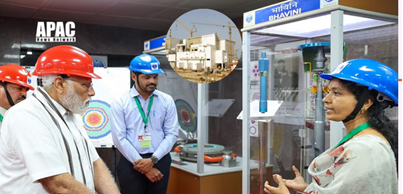
|
Fission Vs Fusion:
|
What is India’s FBR Programme?
- India’s Fast Breeder Reactor (FBR) Programme is a critical component of the country’s strategy to develop a comprehensive nuclear fuel cycle and enhance its energy security. Here are the key aspects:
- Initiation and Goals:
- This programme is part of India's broader objective to establish a robust nuclear energy infrastructure that spans the entire fuel cycle, including electricity generation from uranium in nuclear reactors.
- Nuclear Power Expansion:
- The Department of Atomic Energy (DAE) aims to significantly increase the share of nuclear power in the national energy mix by 2032, targeting a generation capacity of 22,400 MWe from nuclear power plants.
- The DAE has approved the construction of 10 new Pressurised Heavy Water Reactors (PHWRs) in a ‘fleet mode,’ where each plant is expected to be built within five years of starting construction.
- FBR Characteristics:
- Fast Breeder Reactors (FBRs) are designed to generate more nuclear fuel than they consume.
- This is achieved by converting fertile isotopes into fissile material, thereby sustaining a cycle of fuel production and consumption.
- BHAVINI:
- In 2003, the Bharatiya Nabhikiya Vidyut Nigam Ltd (BHAVINI) was established to build and operate India’s advanced nuclear reactor, the Prototype Fast Breeder Reactor (PFBR).
- Upon commissioning, India will become the second country, after Russia, to operate a commercial FBR.
What are the Three Stages of India’s Nuclear Energy Program?
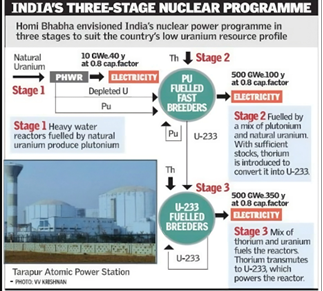
- The First Stage:
- Technology: Involves the use of Pressurised Heavy Water Reactors (PHWRs).
- Fuel and Coolant: PHWRs use natural uranium as fuel and heavy water as coolant and moderator.
- The Second Stage:
- Objective: Establishing Fast Breeder Reactors (FBRs) with supporting reprocessing and plutonium fabrication plants.
- Purpose: To multiply the inventory of fissile material, which is crucial for developing a higher power base needed for the third stage involving thorium.
- The Third Stage:
- Cycle: Focuses on the Thorium and Uranium Cycle.
- Technology: An Advanced Heavy Water Reactor (AHWR) is proposed for producing Uranium-233 (U233) by irradiating thorium in PHWRs and FBRs.
- Long-Term Goal: To commercialise thorium utilisation on a significant scale, contingent on the availability of abundant U233 or Plutonium-239 (Pu239).
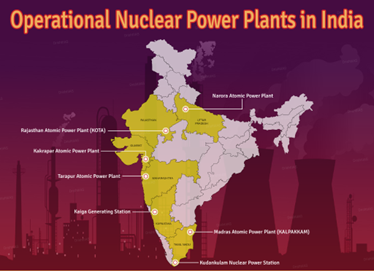
|
UPSC Civil Services Examination, Previous Year Question (PYQ) Prelims: Q:1 Which one of the following statements best reflects the idea behind the “Fractional Orbital Bombardment System” often talked about in the media?
Ans: (c)
Q:2 In the context of Indian news in recent times, what is MCX-SX? (2009)
Ans: (c)
Q:3 Which among the following has the world’s largest reserves of Uranium? (2009)
Ans: (a) |
Source: PIB
Two Indian Astronauts Selected for Axiom-4 Mission
Why in the news ?
- Recently, India has announced the selection of two astronaut-designates, Group Captain Shubhanshu Shukla and Group Captain Prasanth Balakrishnan Nair, for the Axiom-4 mission to the International Space Station (ISS).

About Axiom-4 Mission:
- Basics:
- Mission Overview: Axiom Mission 4 (Ax-4) is a private spaceflight to the ISS, operated by Axiom Space. The mission will use a SpaceX Crew Dragon spacecraft, launched atop a Falcon 9 rocket.
- Scheduled Launch: The flight is scheduled for 2024 and will be the fourth Axiom mission following Axiom Mission 1, 2, and 3.
- Objective: Continue efforts to establish a sustainable human presence in Low Earth Orbit (LEO).
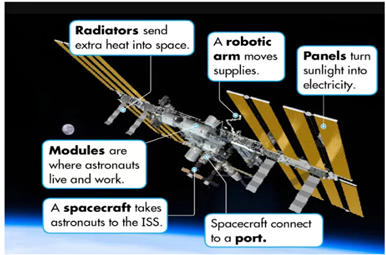
Mission Objectives:
- Commercial Space Endeavours:
- Facilitate commercial activities such as scientific research, technological development, and space tourism.
- Demonstrate the viability of commercial space stations as platforms for business and innovation.
- International Collaboration:
- Carry a diverse crew from various countries, highlighting international interest in space exploration.
- Strengthen global partnerships and contribute to international space initiatives.
- Research and Development:
- Support scientific experiments and technological tests in microgravity.
- Focus on materials science, biology, Earth observation, and other research areas with potential for groundbreaking discoveries.
Key Features:
- Spacecraft and Crew: Utilises SpaceX Dragon spacecraft. The crew will include professional astronauts and private individuals who have undergone extensive training.
- Duration and Activities: Expected to last approximately 14 days. Activities include conducting scientific experiments, technology demonstrations, and educational outreach.
- Commercial Space Station Development: Part of Axiom Space's broader vision to develop the world’s first commercial space station and eventually transition from the ISS to an independent orbital outpost.
About the International Space Station (ISS)
- Launch and Structure: The ISS is a modular space station launched in 1998, allowing for flexibility in module addition and removal.
- Function: Serves as a large laboratory in space for experiments in microgravity, with the first crew arriving on November 2, 2000.
- Objective: Conduct scientific research in fields such as astrobiology, astronomy, meteorology, and physics.
- Orbit and Power: Circles Earth every 93 minutes, completing 15.5 orbits per day. Equipped with eight solar arrays generating about 160 kilowatts of power.
- Altitude: Approximately 400 km above Earth.
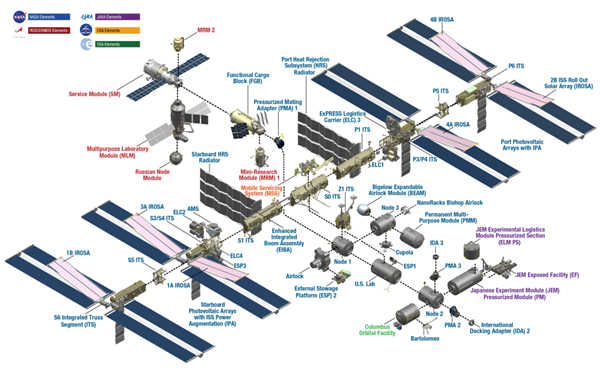
Participating Space Agencies:
- National Aeronautics and Space Administration (NASA) - USA
- Roscosmos State Corporation for Space Activities - Russia
- Note: Russia announced withdrawal after 2024 but agreed to extend joint flights to 2025.
- Japan Aerospace Exploration Agency (JAXA) - Japan
- European Space Agency (ESA) - Europe
- Canadian Space Agency (CSA) - Canada
- The ISS is divided into two segments:
- Russian Orbital Segment (ROS) – Operated by Russia.
- United States Orbital Segment (USOS) – Operated by the US and other nations.
Two Indian Astronauts Selected for Axiom-4 Mission:
- About:
- Selected Astronauts: India has chosen Group Captains Shubhanshu Shukla and Prasanth Balakrishnan Nair for the Axiom-4 mission to the International Space Station (ISS).
- Mission Details: The Axiom-4 mission is part of a collaborative effort between ISRO and NASA, formalised through a Space Flight Agreement with Axiom Space Inc.
- Roles:
- Group Captain Shubhanshu Shukla: Prime mission pilot.
- Group Captain Prasanth Balakrishnan Nair: Backup pilot.
- Training and Contribution:
- Training: Both astronauts will begin their training in the United States starting in August 2024.
- Mission Impact:
- Their participation aims to contribute significantly to scientific research, technological advancements, and the overall enhancement of India's human spaceflight program.
- It also seeks to fortify the collaborative efforts between ISRO and NASA.
|
UPSC Civil Services Examination, Previous Year Question (PYQ) Prelims: Q:1 What is the purpose of the US Space Agency’s Themis Mission, which was recently in the news? (2008)
Ans: (c)
Q:2 Consider the following statements: (2016)
Which of the statements given above is/are correct?
Ans: (c) |
Source: TH
Conservation and Protection of Western Ghats
Why in the news ?
- Recently, The Union Environment Ministry (MoEFCC) has issued a draft notification to declare the Western Ghats an Ecologically Sensitive Area (ESA).
- This comes in the wake of recent devastating landslides in Wayanad, Kerala, which resulted in the loss of over 210 lives and left hundreds missing.
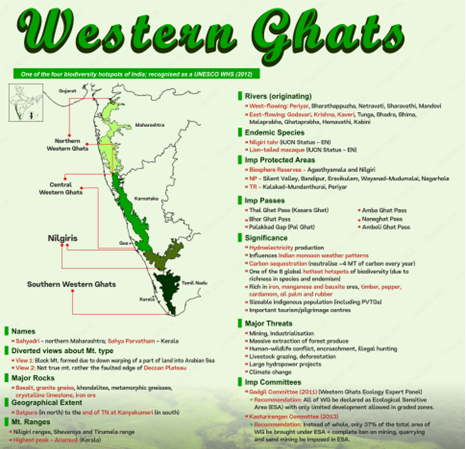
About the Western Ghats:
- Geography:
- The Western Ghats is a mountain range stretching approximately 1,600 km parallel to the western coast of the Indian peninsula.
- Significance:
- It is a UNESCO World Heritage Site and one of the 36 biodiversity hotspots in the world.
- The region is known for its high mountain forests, which are critically endangered due to human activities like deforestation for plantations.
Conservation Efforts:
- Western Ghats Ecology Expert Panel (WGEEP) 2010:
- Chair: Dr. Madhav Gadgil.
- Recommendations: Designate the entire region as an ESA and classify it into ESZ 1, ESZ 2, and ESZ 3. Proposals included halting mining, construction, and decommissioning outdated projects in ESZ 1. Establish a Western Ghats Ecology Authority for sustainable management.
- Resistance and Alternate Panel:
- High-Level Working Group 2012: Led by Dr. K. Kasturirangan, it proposed designating only 37% of the area as ESA, distinguishing between cultural and natural regions. This was aimed at balancing conservation with developmental needs.
- Implementation Status:
- 2017: MoEFCC demarcated 56,825 sq km as ESA, slightly less than the Kasturirangan recommendation.
The Sixth Draft Western Ghats Notification:
- Background:
- The latest draft notification, reissued due to the expiration of the previous draft and possibly in response to recent landslides, aims to address both conservation and developmental concerns in the Western Ghats.
- Details of the Draft Notification:
- Coverage: The proposal includes six states and 59,940 sq km of the Western Ghats, roughly 37% of the range.
- Restrictions:
- Prohibits new and expansion projects of building and construction over specified thresholds.
- Bans mining, quarrying, sand mining, thermal power plants, and polluting industries in the designated areas.
- Regulates hydropower projects and less polluting industries, with a monitoring mechanism to be established.
- Impact of the Latest Draft:
- Conservation: If finalised, the notification will impose significant restrictions on industrial activities and construction, aiming to preserve the ecological integrity of the region.
- Development: It may impact ongoing and planned developmental projects, including agriculture and hydro-electricity plans.
Major Concerns of Declaring Eco-Sensitive Areas (ESAs)
- Balancing Conservation and Development:
- Conflict: ESAs are often located in regions with significant economic potential, leading to conflicts between conservation efforts and development projects.
- Economic Impact: Restrictions in ESAs can limit local economic opportunities, affecting communities' livelihoods.
- Impact on Local Livelihoods:
- Restrictions: Conservation regulations can restrict traditional practices, such as agriculture and fishing, leading to resentment and reduced cooperation from local communities.
- Economic Displacement: Affected communities may face economic hardship due to limitations imposed by ESA regulations.
- Inconsistent Policies and Implementation:
- Regional Variations: Policies for ESAs can vary between regions and states, causing confusion and enforcement challenges.
- Regulatory Gaps: Inconsistencies in policy implementation may create loopholes that allow harmful activities to continue.
- Lack of Awareness and Participation:
- Limited Knowledge: Local communities may not fully grasp the importance of ESAs, leading to resistance against conservation measures.
- Involvement Deficit: Inadequate involvement of stakeholders in decision-making processes can undermine the effectiveness of ESA initiatives.
Way Forward
- Balanced Approach:
- Zoning Strategy: Implement a balanced approach with strict conservation measures in core areas and allow controlled, low-impact development in designated zones.
- Scientific Impact Assessment:
- Evidence-Based Decisions: Conduct thorough, independent scientific assessments to determine appropriate ESA boundaries and minimise unnecessary restrictions on development.
- Stakeholder Engagement:
- Inclusive Process: Foster open communication and collaboration among central and state governments, local communities, and environmental groups to ensure all interests are considered in ESA management.
- Alternative Livelihood Options:
- Economic Alternatives: Develop alternative livelihood opportunities for those affected by ESA regulations, such as promoting eco-tourism and sustainable agriculture.
- Transparent Monitoring:
- Effective Oversight: Establish clear, transparent monitoring mechanisms to track the effectiveness of ESA measures and adjust policies as needed to ensure responsible development practices.
Conclusion:
The conservation of the Western Ghats involves navigating complex trade-offs between environmental protection and developmental aspirations. The outcome of this long-standing effort remains uncertain, with ongoing discussions and resistance from various stakeholder
|
UPSC Civil Services Examination, Previous Year Question Prelims: Q:1 In which one among the following categories of protected areas in India are local people not allowed to collect and use the biomass? (2012)
Ans: (b)
Mains: Q:1 “Policy contradictions among various competing sectors and stakeholders have resulted in inadequate ‘protection and prevention of degradation’ to the environment.” Comment with relevant illustrations. (2018) |
Source: TOI
Axis of resistance
Why in the news ?
- Recently, the Hamas leader was assassinated in an airstrike in Tehran and experts believe that Iran could hike up attacks against Israel through its allies - Axis of resistance.
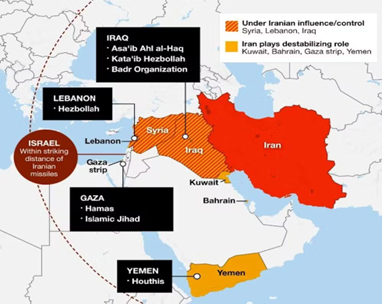
About Axis of Resistance:
- Coalition: The Axis of Resistance is a coalition of Iranian-backed groups.
- Inspiration: The coalition’s name is said to be inspired by former US President George W. Bush’s use of the term ‘axis of evil’ — referring to Iran, Iraq, and North Korea.
Formation:
- Origins: The roots of the ‘Axis of Resistance’ go back to the Iranian Revolution of 1979, which paved the way for radical Shia Muslim clerics to come to power.
- Political and Military Influence: To expand its influence in a region where most powers, such as US-ally Saudi Arabia, are Sunni-majority nations, Iran’s new regime began to support non-state actors.
- Strategic Deterrence:
- Another reason for this support was to deter threats from Israel and the US.
- Iran has viewed Israel’s creation in 1948 as a means for the US (and the West) to influence the region for its strategic interests.
Group Members:
- Hezbollah: Shiite militant organisation.
- Hamas: Palestinian Sunni militant group in Gaza.
- Palestinian Islamic Jihad (PIJ): Sunni Islamist militant group in Palestine.
- Houthis: Zaydi Shia militant group in Yemen
Source: IE
Mozambique
Why in the news ?
- Recently, the shipments of Tur/Pigeon peas from Nacala Port in Mozambique, disrupted by an “anti-India” group, have resumed after the Ministry of Consumer Affairs raised the issue with the Ministry of External Affairs.
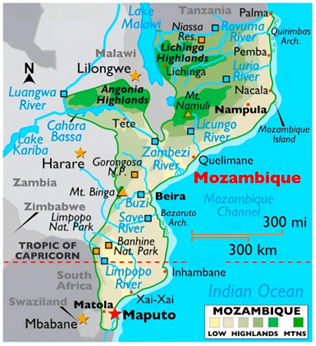
About Mozambique:
- Location:
- Mozambique is a country in Southern Africa, situated in the Southern and Eastern Hemispheres of the Earth.
- The country has a coastline on the Indian Ocean to the east.
- The island countries and territories of Madagascar, Comoros, and Mayotte are separated from Mozambique by the Mozambique Channel.
- Bordering Countries:
- North: Tanzania
- Northwest: Zambia and Malawi
- West: Zimbabwe
- Southwest: South Africa and Eswatini
- Rivers:
- Mozambique is drained by several significant rivers, with the Zambezi being the largest.
- Other important rivers include Limpopo, Licungo, Lurio, and Rovuma.
- Major Lakes:
- Lake Malawi (Nyasa), and Kariba.
- Highest Peak:
- Monte Binga (at 2,435 m)
- Capital:
- Maputo is the capital city of Mozambique.
- The largest city is Matola.
- Natural Resources:
- Mozambique’s principal natural resources include natural gas, coal, mineral sands, hydropower, and potentially oil.
Source: IE
Women Entrepreneurship Program
Why in the news ?
- Recently, The National Skill Development Corporation (NSDC) unveiled the Women Entrepreneurship Program to empower women entrepreneurs and spur economic growth.
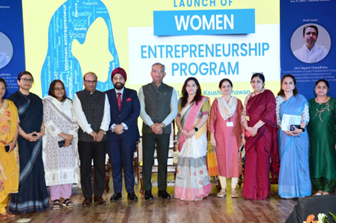
About Women Entrepreneurship Program:
- Objective:
- Designed to address the distinct challenges women face when starting and growing businesses.
- Aims to empower approximately 25 lakh women across India by providing skills, knowledge, and resources needed for successful business ventures.
- Partnership:
- Launched in partnership with Britannia Industries Limited.
- Support and Features:
- The initiative will offer financial grants and feature products and services on the Skill India Digital Hub.
- Reflects a commitment to fostering an inclusive environment for women entrepreneurs.
- Educational Resources:
- NSDC, supported by the National Institute for Entrepreneurship and Small Business Development (NIESBUD), will offer free online self-learning entrepreneurship courses through the Skill India Digital Hub (SIDH).
- Courses will be available in multiple languages and cover topics such as entrepreneurial skills, enterprise setup, finance basics, digital skills, and market analysis.
Key Facts about the National Skill Development Corporation:
- Establishment:
- Established on July 31, 2008, as a not-for-profit public limited company under section 25 of the Companies Act, 1956.
- Operational Model:
- Operates as a unique Public Private Partnership (PPP) model under the Ministry of Skill Development & Entrepreneurship (MSDE).
|
UPSC Civil Services Examination, Previous Year Questions (PYQs): Prelims Q:1 What does venture capital mean? (2014)
Ans: (b)
Q:2 With reference to ‘Stand Up India Scheme’, which of the following statements is/are correct? (2016)
Select the correct answer using the code given below:
Ans: (C)
Q:3 Pradhan Mantri MUDRA Yojana is aimed at (2016)
Ans: (a) |
Source: PIB
Pumped Storage Hydropower (PSH)
Why in the news ?
- The Budget 2024-25 announced that a policy for promoting pumped storage projects will be introduced for electricity storage.
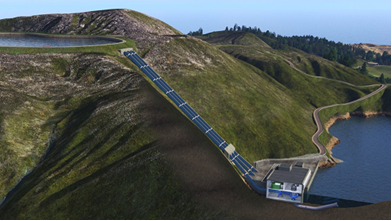
About Pumped Storage Hydropower (PSH):
- Definition:
- A type of hydroelectric energy storage system.
- System Overview:
- Consists of two water reservoirs located at different elevations.
- Working Mechanism:
- Energy Storage: During periods of excess electricity (e.g., off-peak hours or from renewable sources like solar and wind), electricity is used to pump water from the lower reservoir to the upper reservoir.
- Energy Generation: When there is high electricity demand, water is released from the upper reservoir back down to the lower reservoir, passing through turbines that generate electricity.
- Recharge: The system also requires power to pump water back into the upper reservoir, effectively recharging the system.
- Functionality:
- PSH plants operate similarly to conventional hydropower plants but can reuse the same water repeatedly.
- The technology absorbs surplus energy during low demand periods and releases it when demand is high.
- Capacity and Power Generation:
- The energy storage capacity depends on the size of the two reservoirs.
- The amount of power generated is linked to the size of the turbines.
- Types of PSH:
- Open-loop:
- Features an upper or lower reservoir connected to a naturally flowing water source, such as a river.
- Closed-loop:
- Operates at an ‘off-river’ site, producing power from water pumped to an upper reservoir without significant natural inflow.
- Open-loop:
Source: TH
India's Emerging Leadership in Global Health Governance
Context:
- The recent World Health Assembly made progress in global health governance by amending the International Health Regulations and extending negotiations for a Pandemic Treaty, though its adoption is still uncertain.
- The main issue is the equitable sharing of pathogens and benefits, with developing countries seeking fair access to vaccines and diagnostics.
- India, a key player in global health, should actively participate in these negotiations to safeguard its interests.
- It should advocate for effective Pathogen Access and Benefit Sharing, support technology transfer and intellectual property waivers, and ensure the One Health approach is adopted domestically.

What are the major Health Challenges Currently Affecting the Global:
- Cardiovascular Diseases:
- Disproportionate Impact: Low- and middle-income countries are disproportionately affected. In 2021, approximately 80% of the 20.5 million CVD-related deaths occurred in these countries.
- India: Cardiovascular diseases account for over 26% of all deaths in India.
- Infectious Diseases:
- Ongoing Challenges: Despite the prominence of Covid-19, other infectious diseases remain significant.
- Malaria: Affects over 200 million people annually, with 94% of cases in Africa.
- HIV/AIDS: Affects 39.9 million people globally, although better managed.
- Tuberculosis: Causes 1.3 million deaths in 2022.
- India:
- Faces challenges with emerging infections and antimicrobial resistance, with over 58,000 newborn deaths due to drug-resistant infections annually.
- The state of Tripura registers 1,500 new HIV/AIDS cases annually.
- Ongoing Challenges: Despite the prominence of Covid-19, other infectious diseases remain significant.
- Mental Health Disorders:
- Prevalence: Mental health disorders affect 1 in 8 people globally, with depression and anxiety being the most common.
- Economic Impact: The economic costs of mental health conditions are projected to reach USD 6 trillion by 2030.
- Treatment Gap: Over 75% of people in low- and middle-income countries receive no treatment.
- India: Approximately 150 million people need mental health interventions.
- Malnutrition and Obesity:
- Dual Burden: The world faces simultaneous challenges of undernutrition and obesity.
- Obesity: In 2022, 2.5 billion adults were overweight, including 890 million with obesity.
- Undernutrition: 390 million adults were underweight.
- Childhood Malnutrition: Causes 3.1 million under-five child deaths annually.
- Childhood Obesity: Increased tenfold in four decades.
- Impact: This double burden strains healthcare systems, particularly in developing countries.
- Dual Burden: The world faces simultaneous challenges of undernutrition and obesity.
- Non-Communicable Diseases (NCDs):
- Global Burden: NCDs, including cancer, diabetes, and chronic respiratory diseases, cause 71% of global deaths annually.
- Rising Incidence: The burden is rising rapidly in low- and middle-income countries, where 85% of premature NCD deaths occur.
- Risk Factors: Modifiable risk factors include tobacco use, physical inactivity, and unhealthy diet.
- India: Home to 77 million diabetics, the second highest in the world. A World Economic Study estimates India could lose up to USD 4.58 trillion between 2012-2030 due to NCDs.
- Climate Change and Health:
- Health Threats: Climate change is increasingly recognized as a major health threat.
- Effects: Rising temperatures and extreme weather contribute to heat-related illnesses, respiratory diseases, and the spread of vector-borne diseases.
- Predictions: The World Health Organization estimates that climate change will cause approximately 250,000 additional deaths per year between 2030 and 2050.
- Air Pollution: Causes 7 million premature deaths annually, including nearly 1.67 million deaths in India in 2019.
- Health Threats: Climate change is increasingly recognized as a major health threat.
- Water, Sanitation, and Hygiene (WASH):
- Global Access: Inadequate access to clean water, sanitation, and hygiene facilities poses significant health risks.
- Water Access: 2.2 billion people lack access to safely managed drinking water.
- Sanitation: 4.2 billion people lack safely managed sanitation services.
- Impact: Contributes to the spread of waterborne diseases, with diarrheal diseases causing 829,000 deaths annually. Poor WASH conditions also exacerbate malnutrition and impede economic development.
- Global Access: Inadequate access to clean water, sanitation, and hygiene facilities poses significant health risks.
- Aging Population and Healthcare:
- Demographic Shift: The global population is ageing rapidly, with implications for healthcare systems.
- Future Projections: By 2050, one in six people worldwide will be over 65, up from one in 11 in 2019.
- Age-related Conditions: Increases prevalence of conditions like dementia.
- India: The elderly population is projected to rise to 319 million (19.5% of the total population) by 2050.
- Demographic Shift: The global population is ageing rapidly, with implications for healthcare systems.
Why is there a Lack of Global Consensus on the Pandemic Treaty?
- Equity and Access to Medical Countermeasures:
- Core Issue: The central disagreement is over equitable access to vaccines, treatments, and diagnostics during pandemics.
- LMICs' Position: Low- and middle-income countries (LMICs) demand guaranteed access to at least 20% of these resources.
- High-Income Countries' Stance: Wealthy nations are hesitant to commit to such binding agreements, reflecting inequities seen during the Covid-19 pandemic, where they secured most vaccine supplies early.
- Intellectual Property Rights and Technology Transfer:
- Contentious Points: Governance of intellectual property (IP) rights and technology transfer is a major issue.
- LMICs' Requests: LMICs seek provisions for technology transfer and IP waivers during health emergencies to enable local vaccine and treatment production.
- High-Income Countries' View:
- They argue that strong IP protections are essential for innovation and investment, preferring voluntary rather than mandatory technology transfer mechanisms.
- Disagreements extend to the use of TRIPS (Trade-Related Aspects of Intellectual Property Rights) flexibilities.
- Financing and Resource Allocation:
- Debate: There is significant debate over financing pandemic preparedness and response.
- LMICs' Argument: They call for substantial, predictable funding from wealthy nations to build and maintain health systems.
- High-Income Countries' Position: While acknowledging the need for support, they are cautious about open-ended financial commitments. The proposed Pandemic Fund has received mixed reactions.
- Sovereignty and National Autonomy:
- Concerns: Many countries fear infringements on national sovereignty, particularly regarding the World Health Organization's (WHO) authority during health emergencies.
- Reluctance: Some nations are reluctant to cede decision-making power to an international body, fearing it may override national policies or interests.
- One Health Approach and Multisectoral Coordination:
- Support and Challenges: The One Health approach, linking human, animal, and environmental health, has mixed reactions.
- High-Income Countries' Support: Many support this holistic approach.
- LMICs' Concerns: Some view it as an additional burden on already strained resources, raising challenges in operationalizing it without diverting resources from immediate health needs.
- Geopolitical Tensions and Trust Deficit:
- Underlying Issues: Broader geopolitical tensions and a trust deficit among nations complicate consensus.
- Historical Context: Historical inequities in global health governance, rising bioterrorism, and recent Covid-19 experiences have heightened suspicions and reinforced north-south divisions.
What Role Can India Assume in Leading Global Healthcare Efforts?
- Pharmaceutical Manufacturing and Supply Chain:
- Expansion and Modernization: India should focus on enhancing its pharmaceutical manufacturing capabilities to ensure a stable global supply of affordable medicines and vaccines.
- Investment: Invest in research and development to advance from generics to novel drug discovery.
- Supply Chain Leadership: Lead initiatives to strengthen global pharmaceutical supply chains and reduce dependence on any single nation, leveraging schemes like the Production Linked Incentive (PLI) for pharmaceuticals.
- Digital Health and Telemedicine:
- Capitalising on Digital Initiatives: India should leverage its digital health initiatives, like the National Digital Health Mission, to become a leader in health technology.
- Global Sharing: Share expertise in developing large-scale digital health systems with other developing countries.
- Showcase Success: The success of the CoWIN platform for Covid-19 vaccine management highlights India's digital health leadership.
- Traditional Medicine and Integrative Healthcare:
- Promotion and Integration: Promote evidence-based research in traditional medicine systems like Ayurveda and their integration with modern healthcare.
- Standardisation: Lead efforts to standardise and regulate traditional medicine practices, using the WHO Global Centre for Traditional Medicine in Gujarat to boost these efforts.
- Affordable Healthcare Models:
- Sharing Best Practices: Share best practices from large-scale health insurance schemes like Ayushman Bharat with the global community.
- Innovative Models: Promote innovative, low-cost medical devices and healthcare delivery models to position India as a leader in affordable healthcare.
- Management of NCDs: Spearhead initiatives for affordable management of non-communicable diseases in resource-limited settings.
- Global Health Security and Pandemic Preparedness:
- Leveraging Capabilities: Use vaccine manufacturing capabilities and experience in managing infectious diseases to play a central role in global health security.
- Disease Surveillance: Contribute to global disease surveillance networks and early warning systems.
- Sharing Expertise: Share expertise in managing diseases like tuberculosis and HIV/AIDS, and build on initiatives like the Quad Vaccine Partnership.
- Medical Education and Healthcare Workforce:
- Standards Development: Develop global standards for medical education and training, leveraging India’s experience in producing a large healthcare workforce.
- Ethical Recruitment: Initiate global programs for ethical recruitment and brain circulation rather than brain drain.
- Recent Reforms: Build on recent reforms like the establishment of the National Medical Commission.
- Promoting Research and Clinical Trials:
- Ethical Practices: Promote ethical and inclusive clinical trial practices, leveraging India's diverse population.
- Global Research Leadership: Lead research on diseases prevalent in the Global South and facilitate global collaborations in medical research, especially in genomics and personalised medicine.
|
UPSC Civil Services Examination Previous Year Question (PYQ) Prelims Q:1 Which of the following are the objectives of ‘National Nutrition Mission’? (2017)
Select the correct answer using the code given below:
Ans: (a)
Mains Q:1 “Besides being a moral imperative of a Welfare State, primary health structure is a necessary precondition for sustainable development.” Analyse. (2021) Q:2 Appropriate local community-level healthcare intervention is a prerequisite to achieve ‘Health for All’ in India. Explain. (2018) |
Source: TH
Share the article
Get Latest Updates on Offers, Event dates, and free Mentorship sessions.

Get in touch with our Expert Academic Counsellors 👋
FAQs
UPSC Daily Current Affairs focuses on learning current events on a daily basis. An aspirant needs to study regular and updated information about current events, news, and relevant topics that are important for UPSC aspirants. It covers national and international affairs, government policies, socio-economic issues, science and technology advancements, and more.
UPSC Daily Current Affairs provides aspirants with a concise and comprehensive overview of the latest happenings and developments across various fields. It helps aspirants stay updated with current affairs and provides them with valuable insights and analysis, which are essential for answering questions in the UPSC examinations. It enhances their knowledge, analytical skills, and ability to connect current affairs with the UPSC syllabus.
UPSC Daily Current Affairs covers a wide range of topics, including politics, economics, science and technology, environment, social issues, governance, international relations, and more. It offers news summaries, in-depth analyses, editorials, opinion pieces, and relevant study materials. It also provides practice questions and quizzes to help aspirants test their understanding of current affairs.
Edukemy's UPSC Daily Current Affairs can be accessed through:
- UPSC Daily Current Affairs can be accessed through Current Affairs tab at the top of the Main Page of Edukemy.
- Edukemy Mobile app: The Daily Current Affairs can also be access through Edukemy Mobile App.
- Social media: Follow Edukemy’s official social media accounts or pages that provide UPSC Daily Current Affairs updates, including Facebook, Twitter, or Telegram channels.

